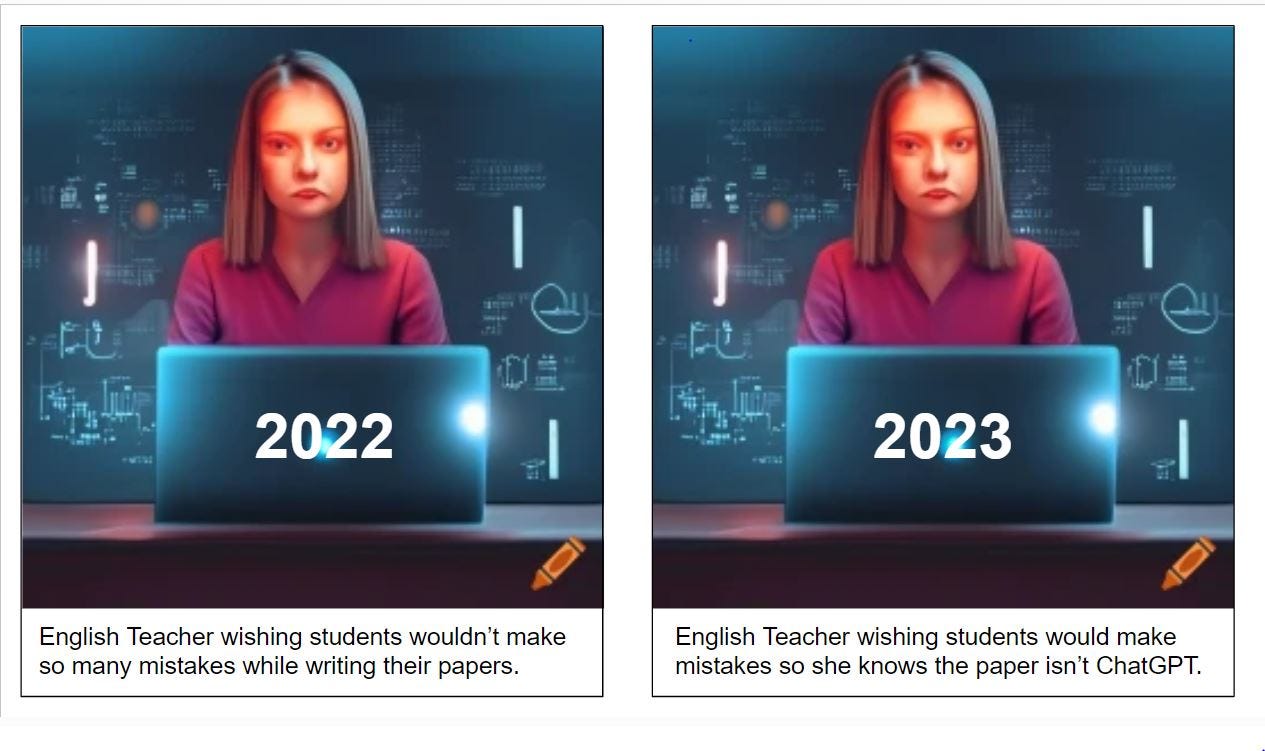Best Practices for Using AI for Your Essay
I have previously posted this in LinkedIn and share this with my colleagues
This is a document I share with my students in my syllabus. I don’t think a simple “AI Policy” statement is sufficient. I think students need direction on how to ethically and responsibly use AI in their writing assignments in my course.
I don’t want them to think they can’t use AI in my course because it is very helpful for students to learn how to use AI—and I want to let them know how much I know about it so that they don’t think they can pull any wool over my eyes! Ha!
Here it is. Feel free to use, remix, and revise for your own use, but I would love some credit!
Michelle Kassorla, Ph.D.
Associate Professor of English
Georgia State University | Perimeter College, Dunwoody
AI definitely has a place in academia, but you have to use AI tools very carefully. These are “Best Practices” for any time you are using a text-based AI:
BE AWARE OF THE UNIVERSITY'S HONOR CODE. The Honor Code is no joke. You can fail a class, or be suspended or expelled for academic dishonesty. Make sure you are using AI only to get outlines and drafts, but NEVER final copies of an essay. Also, NEVER use ChatGPT or other AI models to complete discussions or exams.
BE AWARE OF AI "HALLUCINATIONS." If a Large Language Model (LLM) like ChatGPT can't find an answer, it will make one up. This is called "hallucination." AI will not only hallucinate "facts" in your paper, but AI will also hallucinate references. If you don't know what you are writing about, please do not use AI.
START WITH A STRONG CLAIM. For any essay assignment, you must begin with a claim. The claim should be specific and arguable. If you need help drafting a strong claim, ask your friendly neighborhood chatbot to help you make it stronger. Remember, when you write this paper, you are making an argument for the way you see the material. In order to make a great outline or draft for your essay using AI, you must begin with a strong, clear, and arguable claim.
USE WELL-CRAFTED PROMPTS. "Prompt engineering" refers to the way in which you enter the prompt into an AI model. Prompts must clearly identify the task you want the AI to perform, how you want the AI to perform the task, and what output you want. Here's some great instructions about how to correctly prompt ChatGPT.
CAREFULLY READ THE DRAFT. You may have to ask the AI model to revise the draft several times before you get anything you might consider plausible or usable. You can also ask ChatGPT how to improve your draft.
REVISE, REVISE, REVISE!! Do NOT leave the draft as it is. You need to carefully revise it--often adding levels of detail and clarity to what the AI model has given you. You will also need to add in-text citations and a references page in MLA 9. You must add these separately, as most AI models are incapable of adding real citations that actually exist in the proper format.
USE ZOTERO. Zotero is an awesome tool that should help you through your college years and beyond. Please spend the 20 minutes it takes to learn it. Don’t use ChatGPT for any in-text citations or Works Cited/References pages.
FORMAT YOUR WORK. First and foremost, remove the AI formatting from your work. Remove the box and the highlighting. Then make sure your work is formatted according to the required style manual.
CHECK YOUR WORK. Grammarly has gotten expensive, but there are some great AI alternatives. Try Quillbot or Wordtune to check your work--especially in Google Docs.
USE AI AS A TUTOR to improve your writing. Here is a prompt you might consider:
I want you to act as an AI writing tutor. I will provide you with an essay that I need help improving, and your task is to use artificial intelligence tools, such as natural language processing, to give me feedback on how I can improve my composition. You should also use your rhetorical knowledge and experience about effective writing techniques to suggest ways that the student I can better express my thoughts and ideas in written form. Write: "Please paste your essay in the text box" and wait for me to paste my essay into the text box. When you have completed your analysis of my essay, end with the prompt, "Please paste your next essay in the text box," in order to encourage me to paste my next essay.




